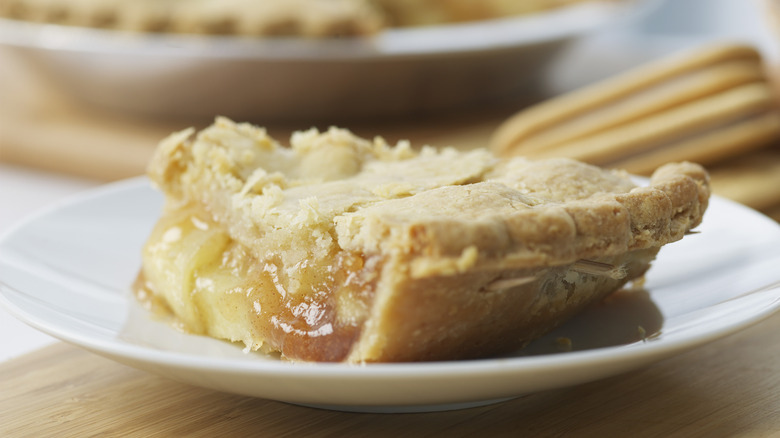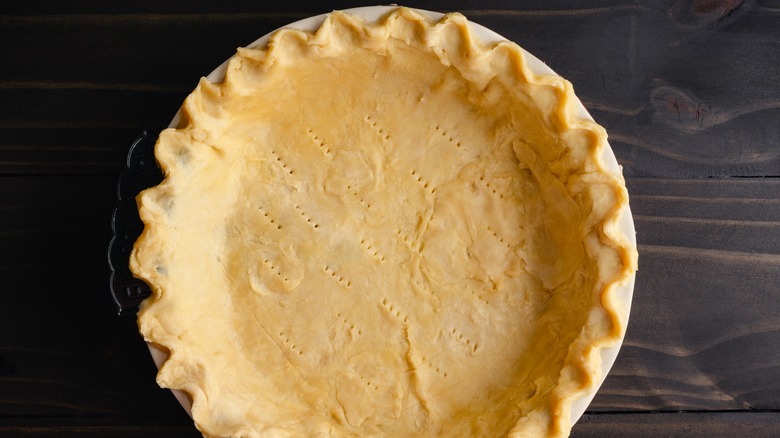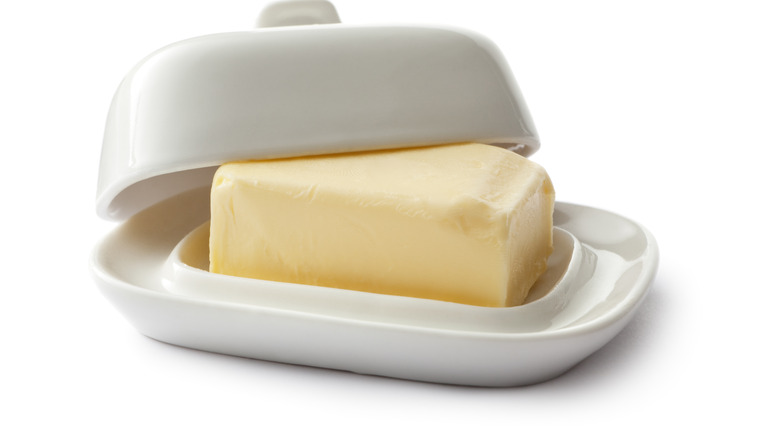Your Apple Pie Will Taste Stunning With One Simple Swap
If apple pie is a culinary artwork, then the crust is the canvas. Home bakers can create an all-butter crust that supports the most filling and delectable scoops of fresh apples and spices with warm aromas in their kitchens. You can build this foundation with this simple yet multipurpose ingredient that replaces the traditional lard and shortening mix to produce a picture-worthy pie. Yes, this one satisfying swap will take your pie crust from savory to strikingly succulent.
The buttery crust showcases culinary flair and is the perfect addition to several versions of the pie, regardless of the kind of apple you're using. Many bakers can borrow and use a variety of spices to complement this savory layer in the apple pie. It is a common belief that apple pie is a famous dessert in America; however, these pies have a global reach. The dessert connects many countries, yet comes in diverse forms and variations, as individuals and groups have adapted apple pie recipes to reflect their cultures and traditions.
The treat has an origin story that encapsulates France and the Netherlands and dates back to the Ottoman Empire. With all that history, the apple pie has proven its staying power. Today, people either enjoy the dessert plain or pile on toppings, and you can even savor a slice à la mode. But no matter how you slice it, this buttery apple pie crust is worth digging into.
Use a butter base in your apple pie crust
The battle of the fats of shortening versus butter is a big one in the baking world. Shortening is known for its higher smoke point while butter is all about the flavor. The mighty pie crust is the perfect platform for the two to duke it out until one becomes the victor. You may have to experiment with both to determine a winner, or follow the advice of a culinary expert who has fought the good fight already.
Butter helps to make the better crust, according to J. Kenji López-Alt, a cookbook author who wrote the sought-after "The Food Lab: Better Home Cooking Through Science." López-Alt says that bakers can skip the shortening in his baking guide on Serious Eats. A simple switch to all-butter, instead of the traditional pairing with butter and shortening (or lard), will turn out a tasty crust. The butter will give way to superb flavor that will contribute to the sizable, flaky, and varied layers in the finished pie. However, the author advises that one must use the butter with flour in a particular way to see a stellar finished product. It will prove fruitful to follow this advice, as well as López-Alt's tips on using leftovers, to give a second life to any extra pie crust that could form a foundation for another culinary creation in the future.
How to add butter properly
The butter and flour make purposeful partners in the pie crust. The partnership of these ingredients incorporates the cold fat with the flour, which can change the texture of baked goods depending on its type, to form a paste. You can use a food processor to mix your recipe's advised amount of flour and butter into a dough-like consistency. The pulse setting will also allow you to achieve the best results, keeping in mind that you should add the flour in batches, says J. Kenji López-Alt.
After using the food processor, grab a spatula to mix water into your crust. You can fold the water into the processed flour and butter for a flaky finished foundation for your pie. This pull-apart crust will add more texture and thus complement the crunchy apples better. López-Alt notes that if you wait for the crust to reach room temperature after taking the pie out of the oven, it will be crispier and mouth-watering.
Bakers will also notice that once the butter melts, the crust will become more tender and delicious once out of the oven. Using butter will eliminate any chance of tough or rough-looking dough that takes away from the pie's beauty. You will discover that trading lard and shortening for butter will yield an apple pie worthy of your table.


